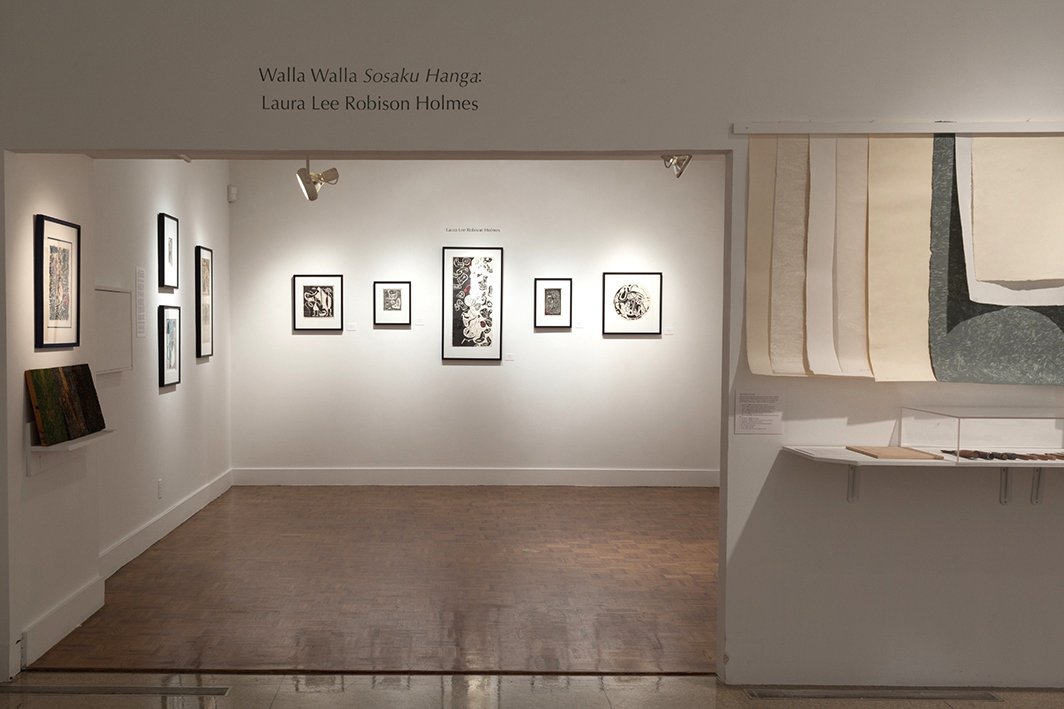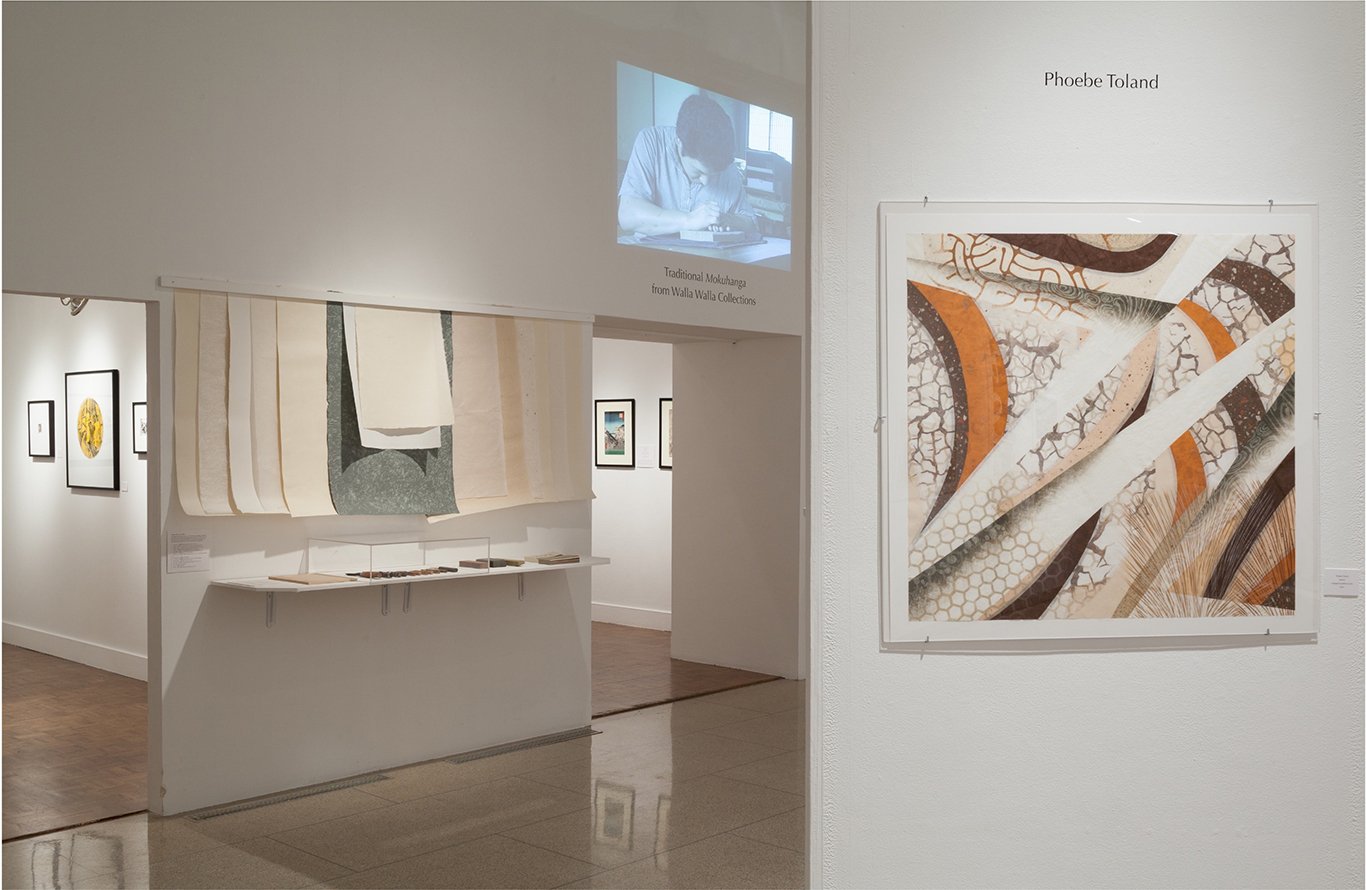
Waters of the Future
Location: Water & Environmental Center, Walla Walla Community College, Walla Walla, Washington, www.watereducationcenter.org
Dates: 2/18/25 – 3/8/25
Artist: Florence Neal
A public art print project about water and the environment.
What is the Color of the Water of the Future?
The artist invites the public to think about their environment and answer the question. Answers to the question are made visible using special hand-carved woodblocks that are hand-printed using water-based pigments (mokuhanga) onto Japanese paper (washi). The artist is using the 17th century Japanese water-based printing technique (ukiyo-e), known today as mokuhanga. Participants receive a "Waters of the Future” button created by the artist.
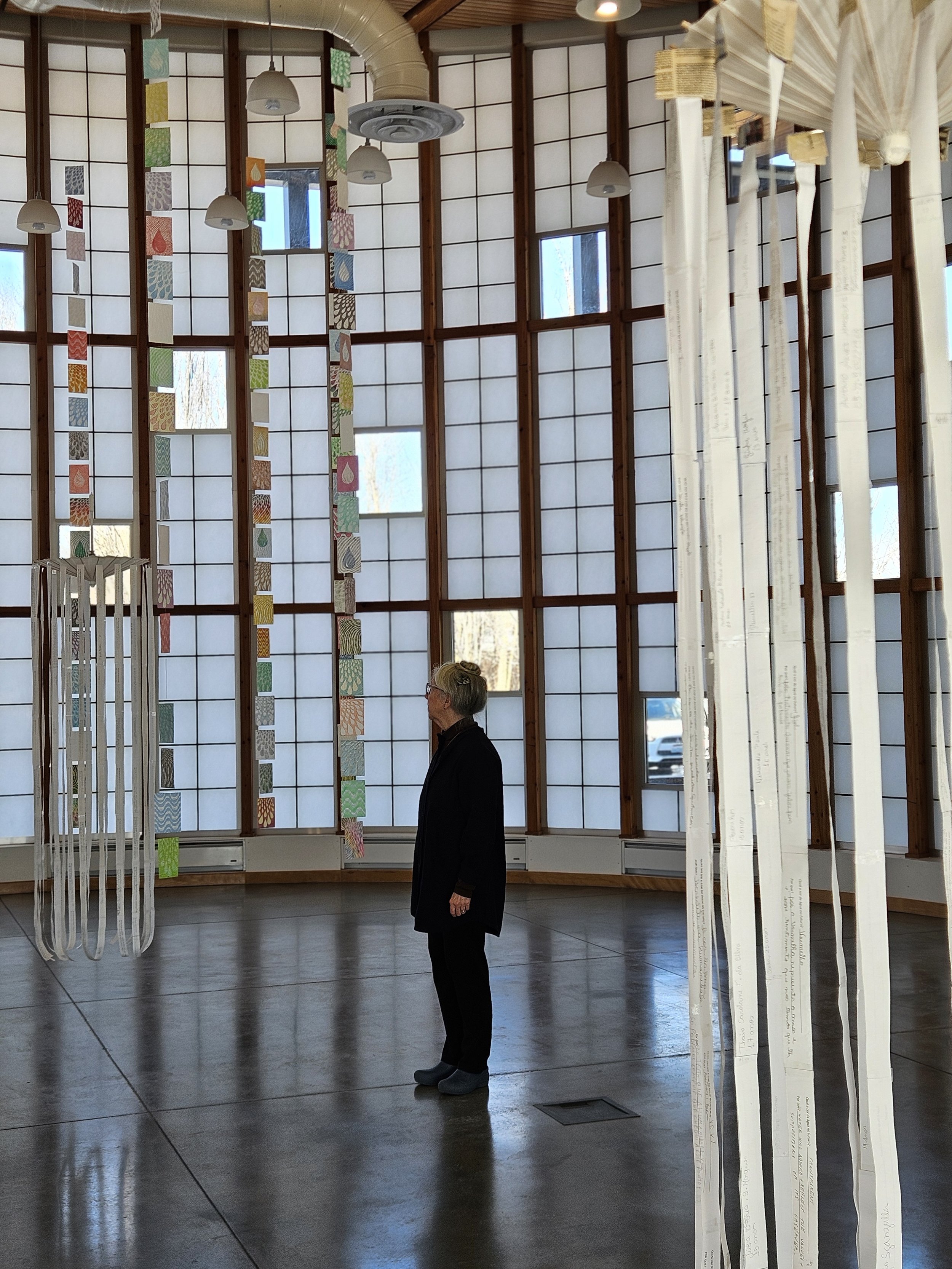





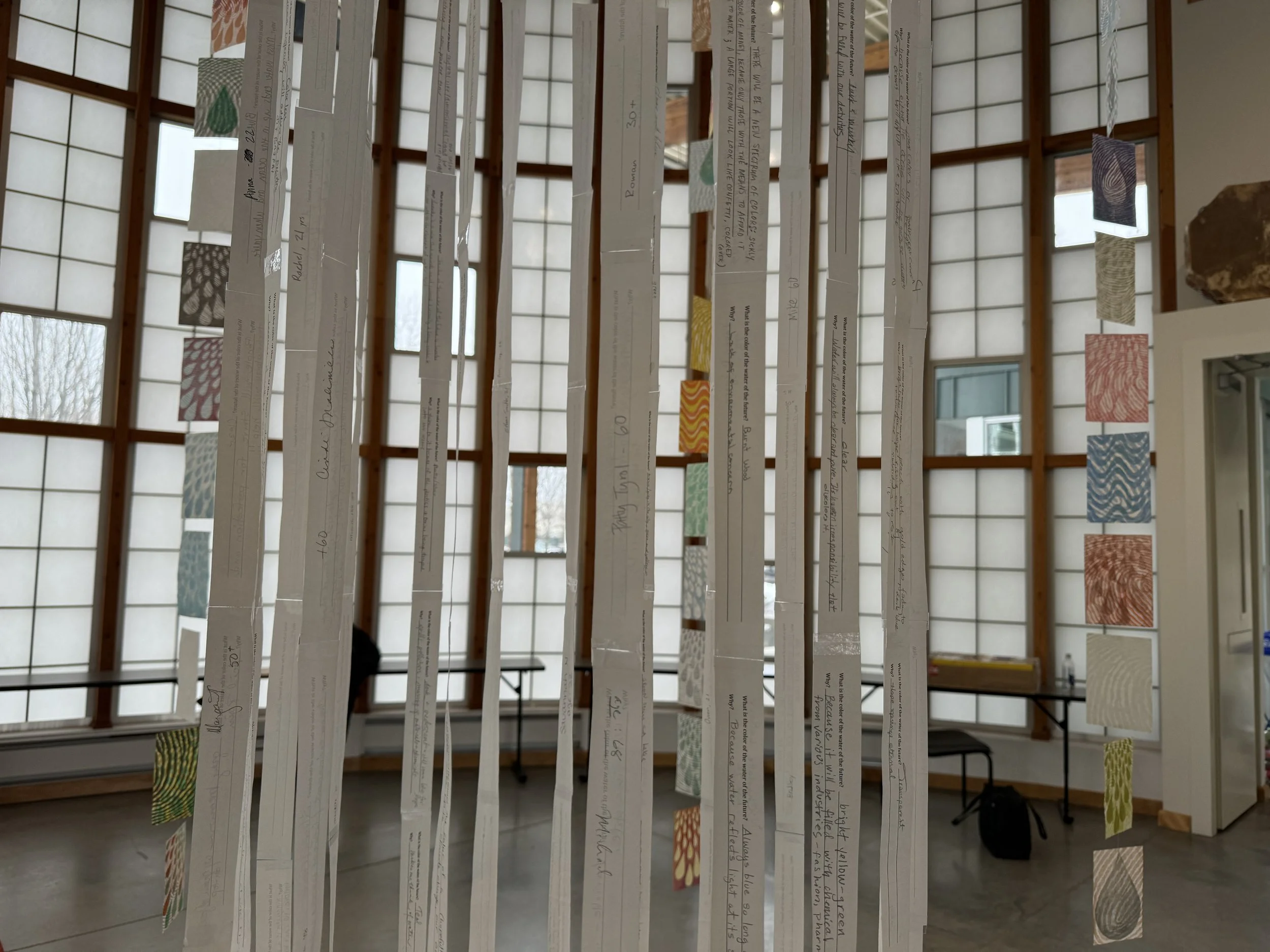


From Blocks to Bytes: Mark Making
Location: Foundry Vineyards Gallery, Walla Walla, Washington
Dates: 6/1/24 – 7/7/24
Artist: Mike Lyon
Written by Lisa Anderson, Curator, Foundry Vineyards
Foundry Vineyards is thrilled to share our newest art exhibition in collaboration with the Mokuhanga Project Space, featuring the pioneering works of Kansas City-based artist Mike Lyon. The exhibition will be on view from June 1, 2024, and run through July 7, 2024, showcasing a collection of Lyon's innovative mokuhanga (Japanese woodblock prints) that blend traditional techniques with modern technology.
Mike Lyon is recognized for his unique approach to printmaking, which integrates his extensive knowledge of computer technology with the ancient art of mokuhanga. This exhibition highlights the evolution of Lyon's work, from his early hand-carved prints to his latest digitally abstracted, machine-carved pieces. Lyon's process is a fusion of traditional craftsmanship and cutting-edge technology, where he programs computers and builds machinery to manipulate art-making tools, creating intricate and precise prints.
This exhibition provides a broad look at the progression of Lyon's work, starting with his earlier hand-carved prints followed by some of his initial machine-carved prints. The show transitions from more realistic photographic images to the digitally abstracted complex images he creates today, illustrating how technology has transformed his depiction of figures.









Global Dimensions
Mokuhanga Project Space Invitational
Location: Foundry Vineyards Gallery, Walla Walla, Washington
Dates: 5/5/23 – 7/30/23
This show brought together ten international artists selected by the Mokuhanga Project Space. This grouping of prints showcased artists that question the boundaries of mokuhanga and explore innovative new ideas and techniques.
Artists included: Paul Furneaux, Jacqueline F Gribbin, Takuji Hamanaka, Keiko Hara, Kari Laitinen, Mike Lyon, Kate MacDonagh, Florence Neal, Yasuyuki Shibata, Katsutoshi Yuasa



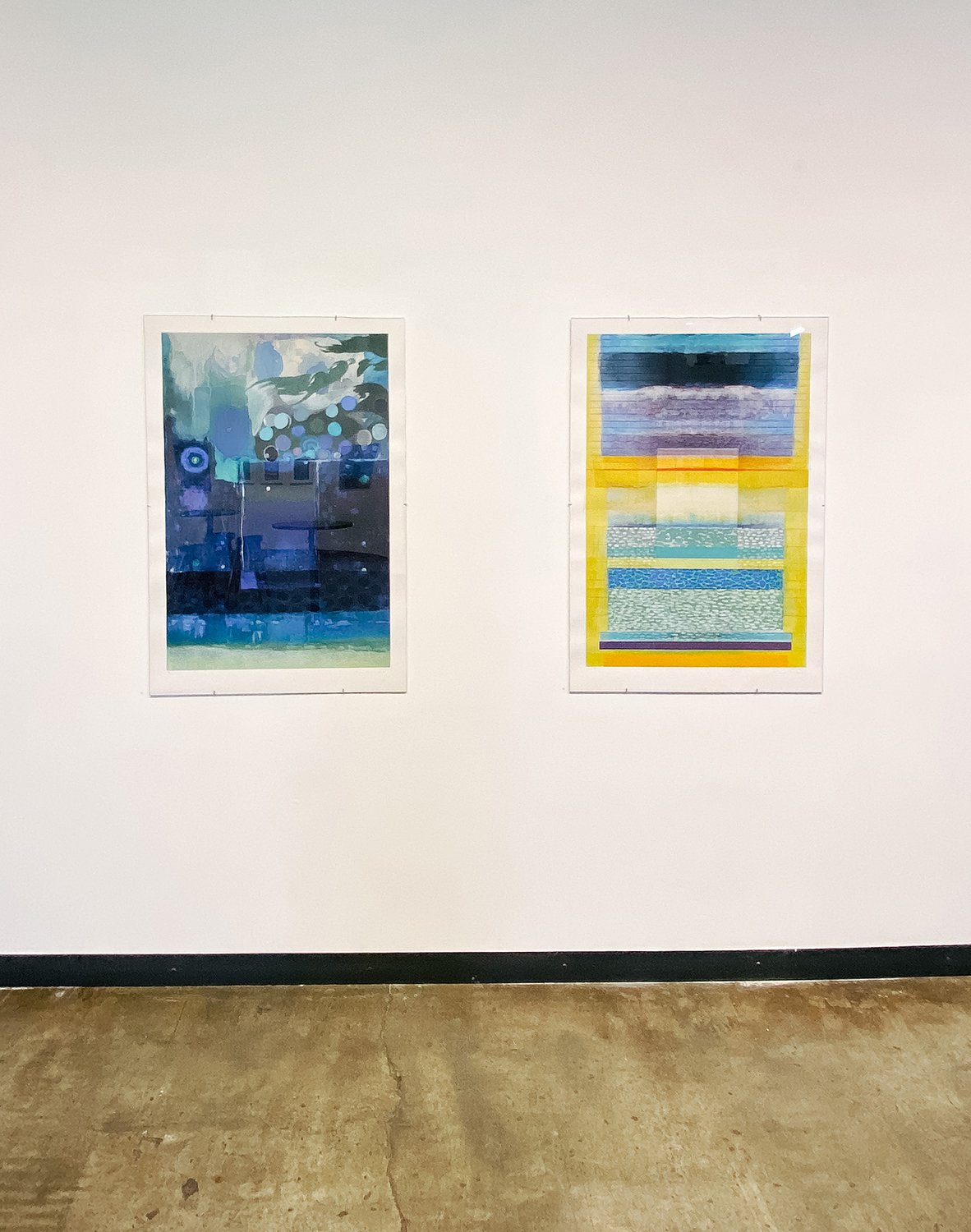








Breaking Boundaries
International Contemporary Mokuhanga Print Exhibition
Location: Foundry Vineyards Gallery, Walla Walla, Washington
Dates: 5/3/19 – 7/28/19
Breaking Boundaries brought together nine international artists who the boundaries of mokuhanga.This exhibition marked the third collaboration between Mokuhanga Project Space and Foundry Vineyards.
Artists Included: Keiko Hara, Florence Neal, Takuji Hamanaka, Yasu Shibata, Annu Vertanen, Katsutoshi Yuasa, Paul Ferneaux, Ralph Kiggell, and Mike Lyon.
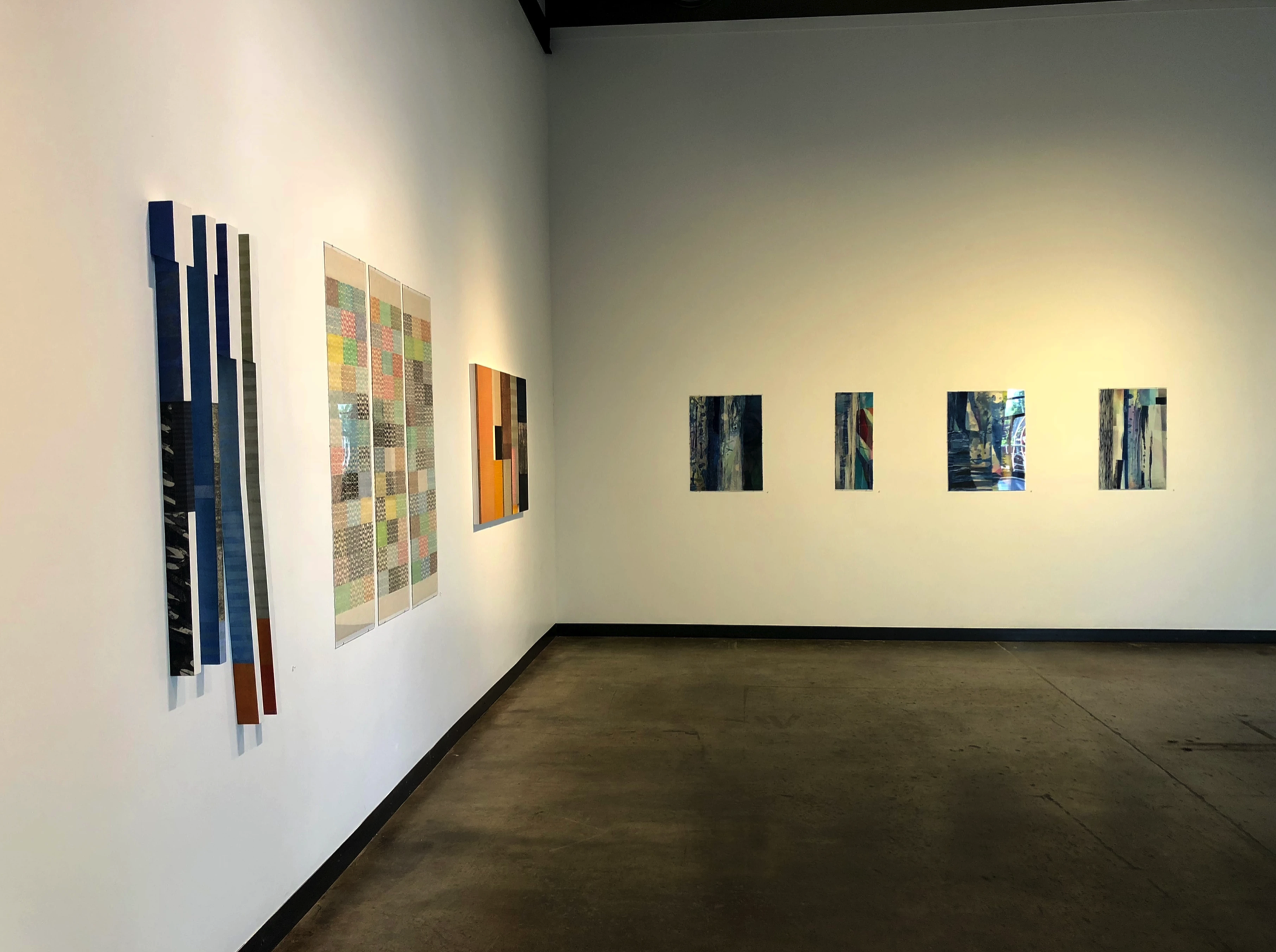
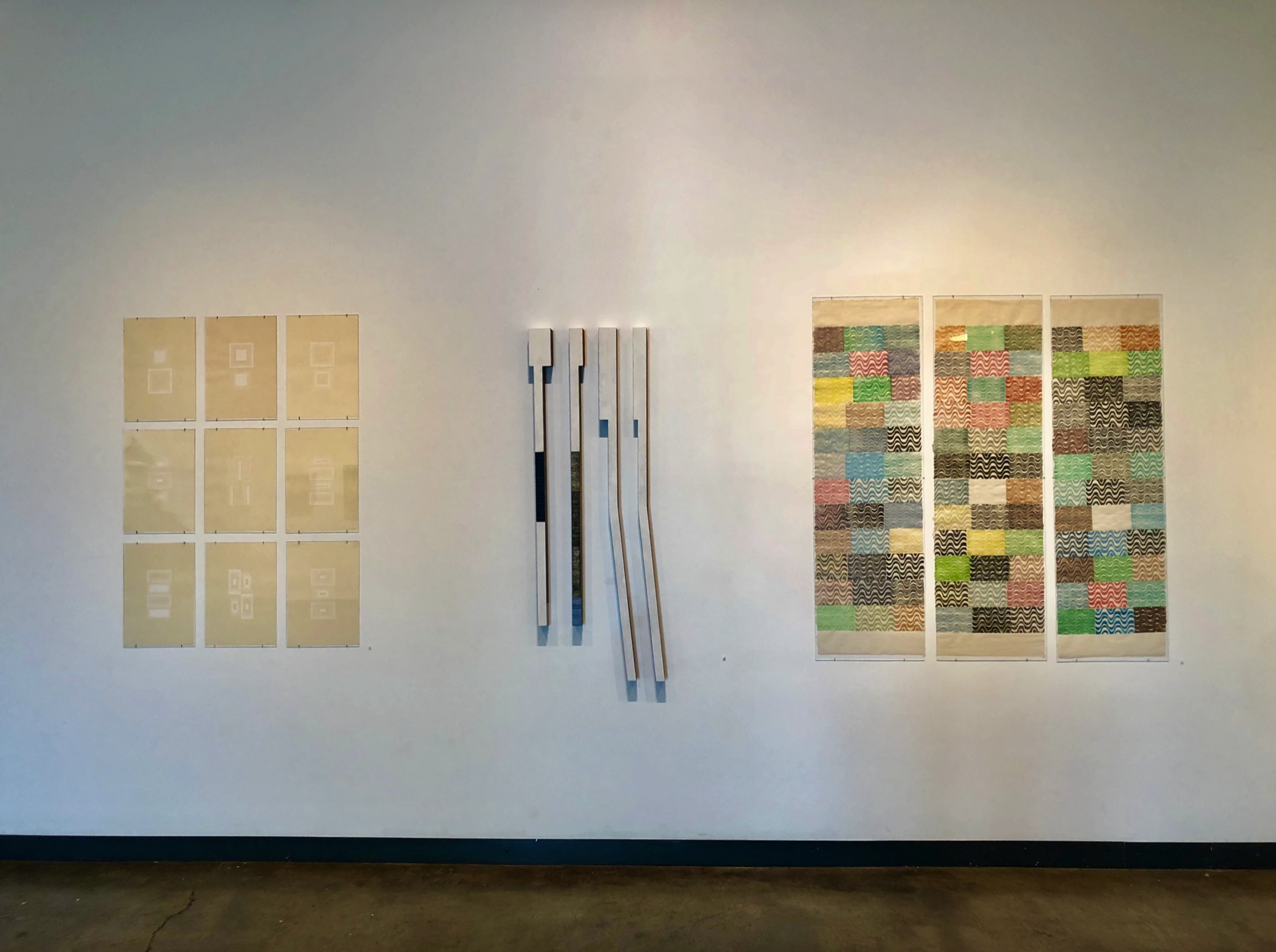


Hooves on the Move
Woodblock Prints from Adventurous Travels in Japan and Finland by Tuula Moilanen, founder of the Finnish Woodcut Artists Society.
Location: Sheehan Gallery, Whitman College, Walla Walla, Washington
Date: 6/7/18 – 6/30/18
Tuula Moilanen, who studied mokuhanga and traditional paper making in Kyoto, served as a guest instructor for the 2018 Summer Mokuhanga Workshop. With her experiences in Kyoto and her work as a printmaker, a bookmaker, and a leading advocate for mokuhanga art, Tuula Moilanen brought to Walla Walla a unique, cross-cultural perspective to the woodblock print tradition. During the reception was a performance by cellist, Ignacio Alcover, member of the Kennedy Center Opera Orchestra. There were also special demonstrations of the art of serving tea (chanoyu) and arranging flowers that were held in the east wing of Olin Hall, which houses the Whitman College Tea Room (Chikurakken). Tuula Moilanen also shared her unique background at the Bend Oregon Art Center, founded by Pat Clark, conducting a bookmaking workshop in June immediately following the Mokuhanga Workshop at Whitman College.
Additionally, this exhibition included woodblock prints produced by participants in the inaugural Mokuhanga Workshop in 2016, prints created by participants in the 2017 Mokuhanga Print Studio Program, and prints from the Whitman College Mokuhanga Print Collection.
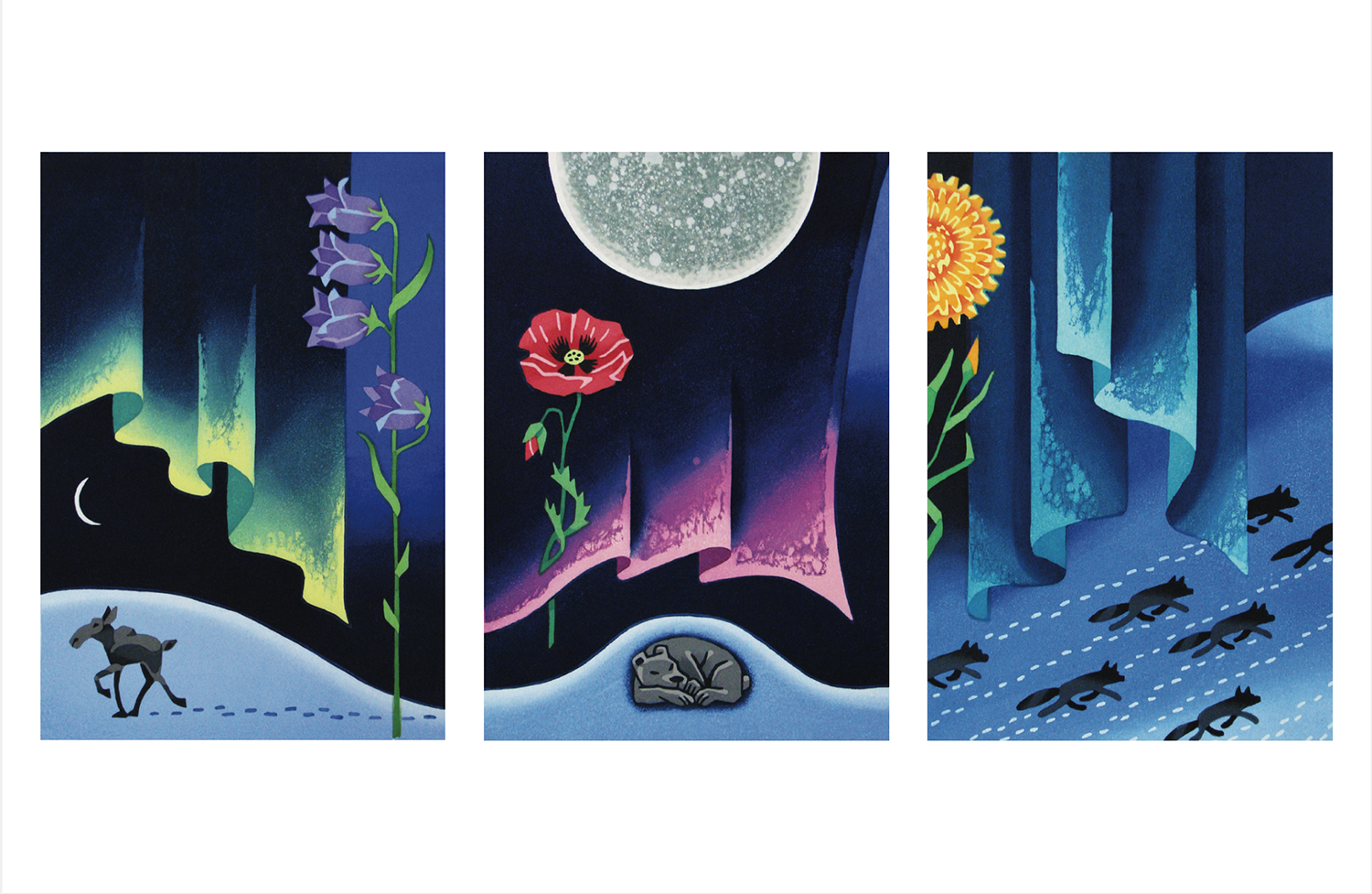






Recent Works in Painting, Print, and Glass by Keiko Hara
Location: Foundry Vineyards Gallery, Walla Walla, Washington
Dates: 8/4/17 – 10/22/17
Written by Andy Monserud of the Walla Walla Union-Bulletin
Walla Walla area residents can see and create Japanese art this week in a workshop and an exhibition showcasing Japanese artists from as far as Kyoto and as near as Whitman College.The opportunities come in the form of an exhibition of the work of Keiko Hara at Foundry Vineyards, opening on Friday from 5-8 p.m. and running through Oct. 22. And at Whitman's annual weeklong mokuhanga printmaking workshop, in which wood- block print carver Shoichi Kitamura is tutoring participants in the traditional Japanese art form through Sunday. On Wednesday, a session was open to the public, with Kitamura and facilitators Hara and Whit- man professor Akira Takemoto introducing visitors to various Japanese aesthetic traditions. At the center of both of these events is Hara, a Japanese-born Walla Walla resident and former Whitman professor. Hara's work is multifaceted, in some cases literally so. The work shown at Foundry includes enormous paintings from her decades-spanning "Topophilia" series, a dangling fused-glass creation created during Hara's recent residency at the Pilchuck Glass School in Stanwood, Wash., and woodblock prints created in the mokuhanga style. Her "Topophilia" project, start- ed more than 30 years ago, has to do with ancestry and place."Everyone has a very special place. And those special places connect every human. Every conflict that we have-political, culture or racial issues-I think that we can go beyond, and that we have all of those individual topophilia... If every individual can connect with topophilia, we won't have war. That's my thought." Hara was born during World War II to Japanese parents in Korea in 1942 and moved with her family to Japan in 1945. She has lived and worked in Walla Walla for more than three decades, beginning when she took a professorship at Whitman in 1985. Her work has been shown at exhibits around the U.S., Europe and Japan, but she stayed to live and work here after her 2006 retirement from Whitman She also has several public art installations all over the Pacific Northwest, including one in Walla Walla, "Topophilia: Gates." Made in 1999, it was Hara's first glass sculpture with then-Whitman student and now-professional glassblower Jeff Wallin, who also worked with her at Pilchuck to create some of the art in the exhibition. It can be found on the Whitman campus in College Creek near Boyer and Park Avenues. "I think the one thing that goes through everything that I've seen so far of Keiko's artwork is this layering, to create a sense of depth in all of this," said Lisa Anderson, Foundry Vineyards sales and event manager. Especially notable is her work with mokuhanga printmaking, where she employs carved wood blocks to make layer after layer of ink into a multicolored design. "I think two-dimensional work is so exciting, because it's not like sculpture," Hara said. "With a really limited surface, you can really articulate and create amazing spatial, dimensional qualities. "And now, across town on the Whitman College campus, Hara is again involved in mokuhanga printing. While she awaits the grand opening of the exhibition on Friday, the Mokuhanga Center at Whitman is hosting its annual print studio program. Hara and Takemoto established the center in 2015 to promote the Japanese woodblock printing tradition at the college and in the community. They co-hosted the first summer workshop last year. Ten woodblock print artists from around the world, including two from Walla Walla, are working alongside Kyoto-based carver Shoichi Kitamura in a weeklong residency at the center. Kitamura began teaching on Monday morning with a lesson that focused heavily on the importance of tools. Speaking sometimes in english and sometimes in Japanese, with translation assistance from Takemoto, Kitamura teaches participants about the art of carving the blocks. Participants also learn about the use of the tearoom and other styles of Japanese art. "We've got a lot of things going on in terms of introducing mokuhanga in the broader sphere of Japanese aesthetics," Takemoto said those aesthetics will also be accessible to the public. While the workshop is a small affair, Walla Walla residents will have a few opportunities to gain from it. On Wednesday people met Kitamura and learned more about the program in the Chikurakken tearoom at Whitman's Olin Hall, where the horishi, or master carver, has set up shop. An exhibit of art from the workshop can be found in Maxey Hall, just off Boyer Avenue, until the end of August. Hara's art will remain on exhibit at Foundry Vineyards until Oct. 22.


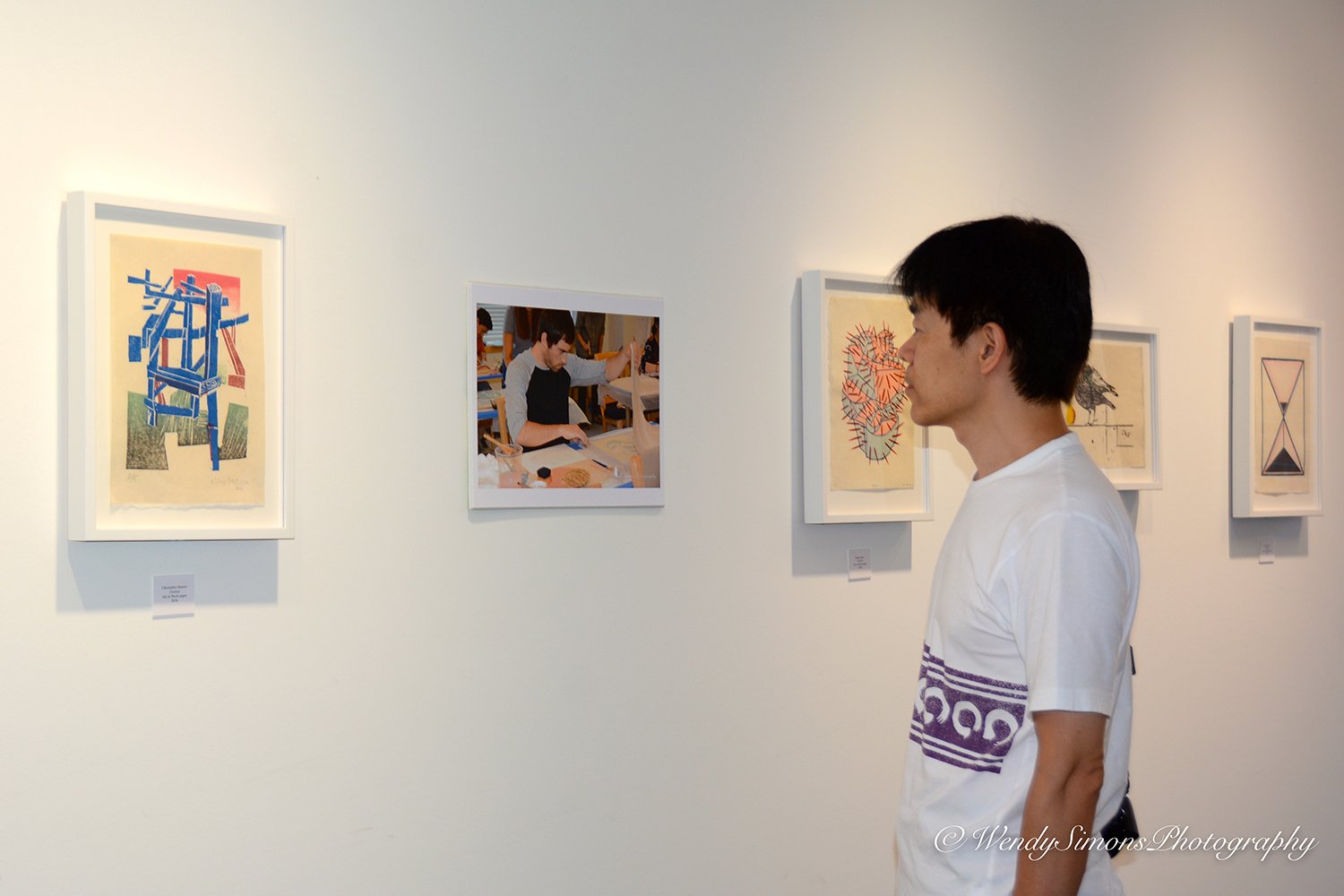
Yasu Shibata: Japanese Woodcuts
Also featuring calligraphy by Yoshiyasu Fujii
Location: Foundry Vineyards Gallery, Walla Walla, Washington
Dates: 6/26/16 – 7/31/2016
This exhibition featured the works of Master Printer Yasu Shibata and Master Calligrapher Yoshiyasu Fujii.Master Printer Yasu Shibata received his BFA from Kyoto Sika University before moving to the United States in 1991. In the U.S., he began his printing career at Tyler Graphics working for artists such as Frank Stella, David Salle and Helen Frakenthaler. Currently. Shibata works at the print publisher Pace Editions in New York where he prints exclusively using Mokuhanga techniques to create editions for artists such as Chuck Close and James Siena. Shibata's own artwork utilizes both reduction style techniques and Japanese woodcut methods to create multiple layers of pigment that results in vibrant colors exhibited through variations of simple shapes.
Master Calligrapher Yoshiyasu Fujii's lifelong passion for calligraphy began at the age of five and continued onto his college career where he attended Daito Bunka University to study under Master Calligrapher Shumpo Akashi. From there, he continued to receive many awards, including the 1990 and 1992 top award at the Mainichi Calligraphy Competition, one of Japan's oldest and most prestigious calligraphy competitions. Fujii was also awarded the only U.S. license for calligraphy instruction by the Japanese Ministry of Education. He has used his talents to promote the unique art form of calligraphy in the U.S.. through schools and programs held in Seattle, Portland, California and on the Japanese island of Kyushu.
Additional events held in conjunction with exhibition:
6/26/16 – 7/1/16: Mokuhanga Workshop taught by Master Printer Yasu Shibata at Whitman College Art Opening for Master Printer Yasu Shibata & Master Calligrapher Yoshiyasu Full at
6/29/16: Demonstration of contemporary Japanese flower arranging by Yabe Keishu at Foundry Vineyards




Exploring Fragility and Transience
By young mokuhanga artists from Tokyo, Japan
An Inaugural Exhibit of the Walla Walla Mokuhanga Center.
Location: Foundry Vineyards Gallery, Walla Walla, Washington
Dates: 4/2/16 – 6/19/2016
In conjunction with the Mokuhanga Innovation Laboratory in Tokyo and with the support of the Japanese Ministry of Education, Foundry Vineyards, the Program in Asian Studies and the Art Studio Department at Whitman College, and artWalla, the Walla Walla Mokuhanga Center launch its programs with an inaugural exhibit of young mokuhanga artists from Tokyo, Japan. The exhibit also highlighted the work of Professors Hiroki Satake of Tokyo Zokei University and Professor Katsutoshi Yuasa, Research Fellow at Sangyo Jimbungaku Kenkyusho, Tokyo.
Featured Artists: Michiko Hamada, Kazuki Sakai, Chihiro Taki, Yūna Tanī, Ayumi Ohira, Misaki Oguro, Shoji Miyamoto, YukiKashiawagi, Katsutoshi Yuasa, and Hiroki Satake.
Professor Satake also present a lecture demonstration of woodblock carving techniques, the art of sharpening and caring for woodblock carving tools and techniques associated with the art of bokashi. Bokashi is a printing technique that creates delicate shades and gradations on the surface of the paper. Professor Satake's lecture demonstration was held in the Tea Room in Olin East at Whitman College. Additionally, there was a lecture held at Fouts Center for Visual Arts by April Vollmer. Vollmer is well known for her book, Japanese Woodblock Print Workshop: A Modern Guide to the Ancient Art of Mokuhanga.

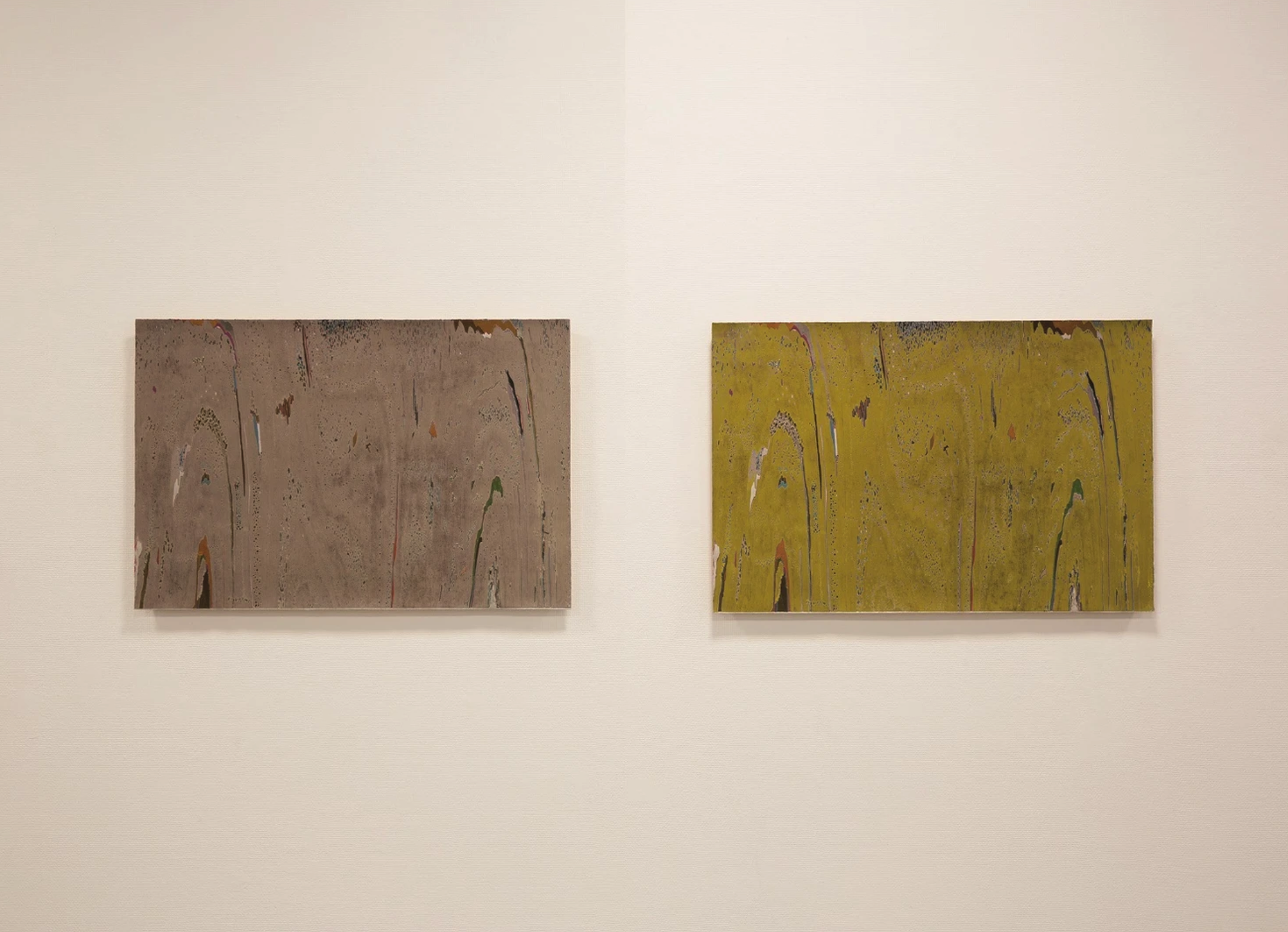
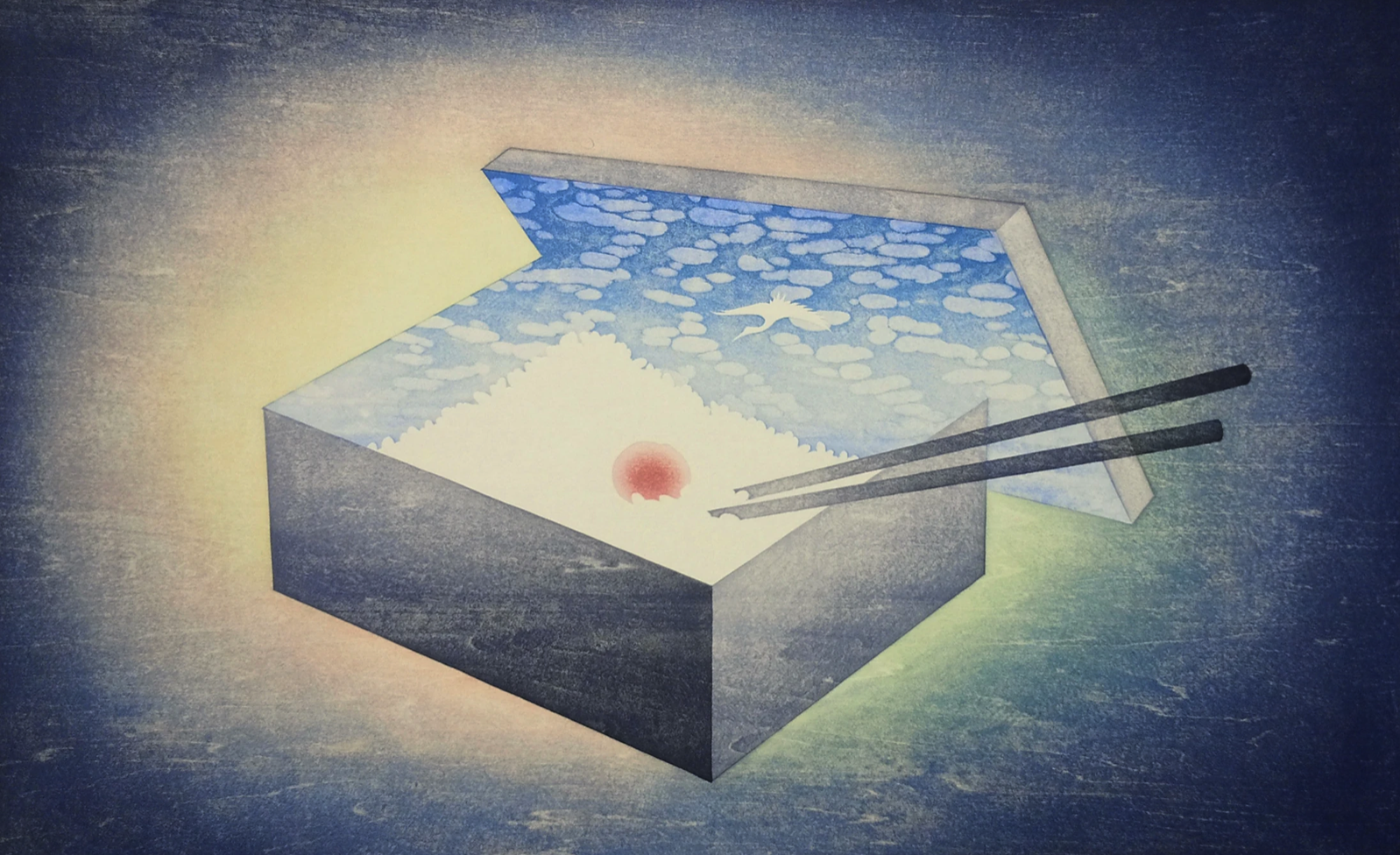
Abstract American Mokuhanga
Location: Sheehan Gallery, Whitman College, Walla Walla, Washington
Dates: 2/19/14 – 4/18/14
This exhibit was curated by Professor Akira Takemoto (Japanese Studies) and Professor of Art Emerita, Keiko Hara to explore the ways in which traditional Japanese woodblock print have influenced and inspired American abstract printmakers. The exhibit highlighted the work of seventeen American woodblock print artists who created new, different, and contemporary visual effects that mirrors and expands the Japanese mokuhanga and Ukiyo-e tradition. The exhibit included the work of the following artists: Takuji Hamanaka, Keiko Hara. Stephen Hazel, Shōichi Ida, Catherine Kerman, Karen Kunc, Robert Kushner, Hiroki Morinoue, Florence Neal, Kathleen Rabel, Mellesa Schulenberg, Yasuyuki Shibata, James Sienna, Carol Summer, Phoebe Toland, and April Vollmer.
The exhibition space included a room that presented traditional 18th century Ukiyoe Prints from collections in Walla Walla; a room that introduced the tradition of “Japanese Creative Printmaking” (sōsaku hanga); and a room that showcased the woodblock prints of Walla Walla artist, Laura Lee Robison Holmes who was profoundly influenced by Japanese sōsaku hanga. Throughout the gallery, there were displays of mokuhanga tools and a series of photos showing the mokuhanga process. The Olin East Asian Art Gallery and Lounge areas was also used to create a complementary exhibit of Japanese art from the Davis Collection where demonstrations of the art of serving tea (chanoyu) were presented.
The exhibit opened with a lecture by Karen Kunc (University of Nebraska-Lincoln) on Friday, February 21, 2014 (Olin 130 at 5:30 p.m.) and a workshop by Kunc on Saturday and Sunday, February 22-23; 2014; the exhibit also featured a special lecture and workshop by Hiroki Morinoue (Studio 7 Gallery, Holualoa, Hawaii) on Friday, April 4 to Sunday, April 6, 2014.
The exhibition and interpretive events at Whitman College was made possible by the support from the Sheehan Gallery, the Program in Asian Studies, the Program in Japanese Studies, the Department Art History and Visual Culture Studies, the Department of Studio Art and Printmaking, the Department of Foreign Languages and Literatures at Whitman College, and a special contribution by Whitman Class of 1988 alum, Mark Giordano.
Acknowledgements from the Curators:
Professor Keiko Hara and I present this exhibit as a way for you to explore the ways in which traditional Japanese woodblock prints (mokuhanga) have influenced and inspired American abstract printmakers. Mokuhanga refers to the sumptuously colored and visually compelling woodblock print techniques that transformed Japanese art during the 18th and 19th centuries. The character for moku (木) literally means "wood"; han (版) refers to the process of printing or making impressions; and ga (画) or "picture" refers to the painting created by this woodblock print process. The term, therefore, refers to the technique that produced the now well-recognized Ukiyo-e ("pictures of the floating word") prints that flooded the streets of Edo (present day Tokyo) during the Tokugawa period (1603-1868). In fact, it was in 1765 that polychrome woodblock techniques allowed printmakers to move beyond single or two-colored prints and to experiment and produce rich and lavish multicolored prints that came to be known as nishiki-e (錦絵, literally, "brocade pictures"). These gorgeously crafted, colorful woodblock images celebrated the illicit, decadent, and suave lifestyles favored by merchants and townspeople in the Tokugawa period. By the late 19th century, after Japan's ports were open to American and European traders, these Ukiyo-e prints entranced and surprised European artists like Pissaro, Cassat, Gauguin, Degas, Van Gogh, and most famously, Toulouse Lautrec, who saw in the Ukiyo-e prints a style that surely led to the growth of Impressionism in Europe. Even today, Americans either know the word Ukiyo-e or they have seen that ubiquitously famous print showing a gigantic wave that overwhelms three small fishing boats while, in the distance, the snowy peak of Mt. Fuji rises unaware of this tsunami disaster. This print by Hokusai from the early 1830's along with the work of other Ukiyo-e artists quickly led to an interest in Japan and Japanese art. But the woodblock print technique itself never left Japan, and it remained the exclusive property of craftsmen employed by Japanese publishing companies. In fact, as Japan increasingly looked to the west to modernize and enlighten its society, Japan turned to western style lithography, etching, and silkscreen, which made it difficult for traditional Japanese master printers and carvers to make a living. After a hiatus during the first half of the 20th century, interest in mokuhanga as an intriguing technique for contemporary artists began to grow in the 1980's. In particular, Kathan Brown of Crown Point Press helped connect American artists with Japanese master printers like Toda Tadashi (1936-2000), who expressed an interest in working with non-Japanese contemporary artists. Between 1983 and 1988, Toda made prints with twenty-three Crown Point artists including Chuck Close, Helen Frankenthaler, Wayne Thiebaud, and Robert Kushner. More recently, American artists have learned, experimented with, and refined their mokuhanga skills, and they have used this process alone or in combination with other techniques to create challenging new prints that play with the possibilities of bringing together traditional techniques with new ways of thinking. Abstract American Mokuhanga serves as a way to illustrate this ongoing vitality by presenting the work of seventeen American woodblock print artists who have created different and contemporary visual effects that mirror and expand the Japanese mokuhanga and Ukiyo-e tradition. Despite its laborious and intricate nature, the work of these artists show how they have both mastered this method of printmaking and recognized a new platform for creating multiples. Though each print in this exhibition started by carving lines and patterns onto a woodblock surface, the prints on display clearly show how each artist's marks have transported him or her from familiar to unfamiliar places as they move beyond figurative icons and symbols to capturing intuitive, optical, and metaphysical expressions. We can almost sense the thrill that the artists feel in their individual journeys, and we can also note how they join a growing movement of artists from around the world who, in several international conferences and workshops, have exchanged ideas, exhibited work, and explored the ties that mokuhanga has with related crafts such as paper making and baren making. With another international conference scheduled in at the Tokyo University of the Arts (Tokyo Geidai) in 2014, mokuhanga continues to make its mark in the global art world, and we would like to consider this exhibit as a way develop a forum in Walla Walla and Whitman College for printmakers, artists, tool makers, art historians to gather again for future collaborative projects.
Finally, we would like to acknowledge contributions from the Whitman Class of 1988 alum, Mark Giordano, Whitman College's Asian Studies Program, the Department of Art History and Visual Cultural Studies, the Department of Studio Art and Printmaking, and the Department of Foreign Languages and Literatures for helping to make this exhibit possible. We certainly want to thank all of the artists who generously agreed to loan us their work for this exhibit, and we bow our heads with deep appreciation for the patience that Daniel Forbes, Director of the Sheehan Gallery and Kynde Kiefel, Exhibitions Manager, showered on us. In a world where people covet individual recognition, it is nice to collaborate with people like Daniel and Kynde and to trust their skills and sensibilities. Their efforts are visible in every corner of the gallery. We welcome you to enjoy the different spaces in the exhibit and join the collaboration.
Keiko Hara and Akira Takemoto
Artists included: Takuji Hamanaka, Keiko Hara, Stephen Hazel, Shoichi Ida, Catherine Kerman, Karen Kunc, Robert Kushner, Hiroki Morinoue, Florence Neal, Kathleen Rabel, Mellesa Schulenberg, Yasuyuki Shibata, James Sienna, Carol Summer, Barbara Tentenbaum, Phoebe Toland, and April Vollmer.


